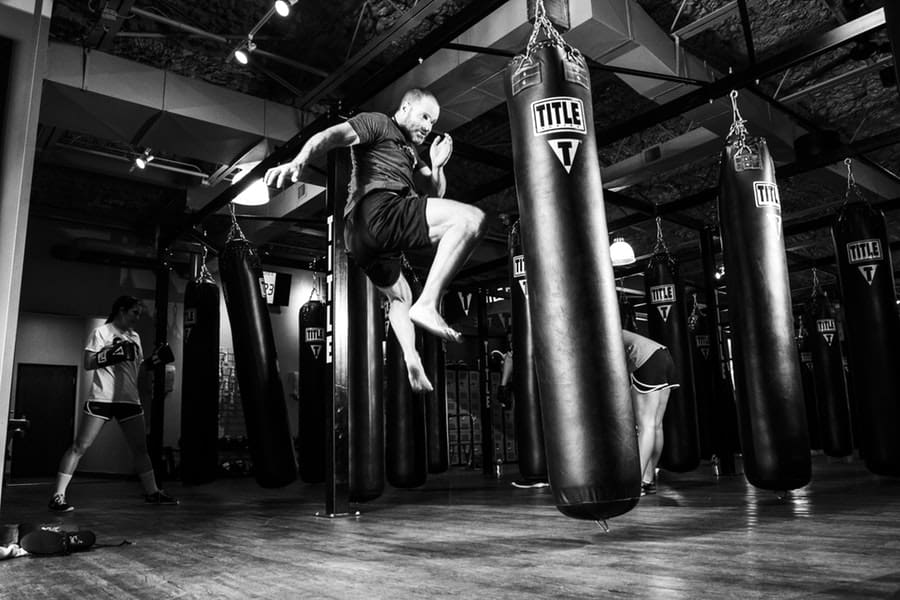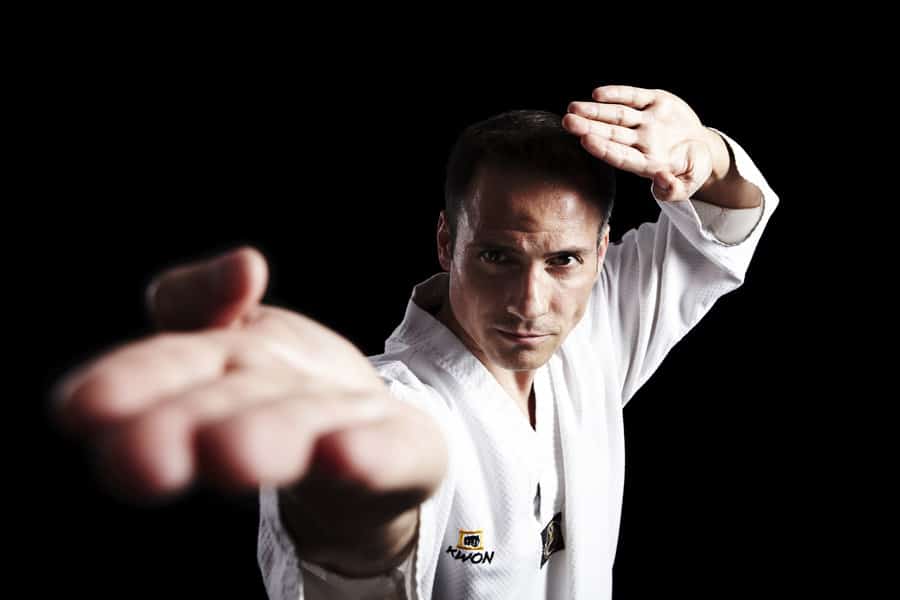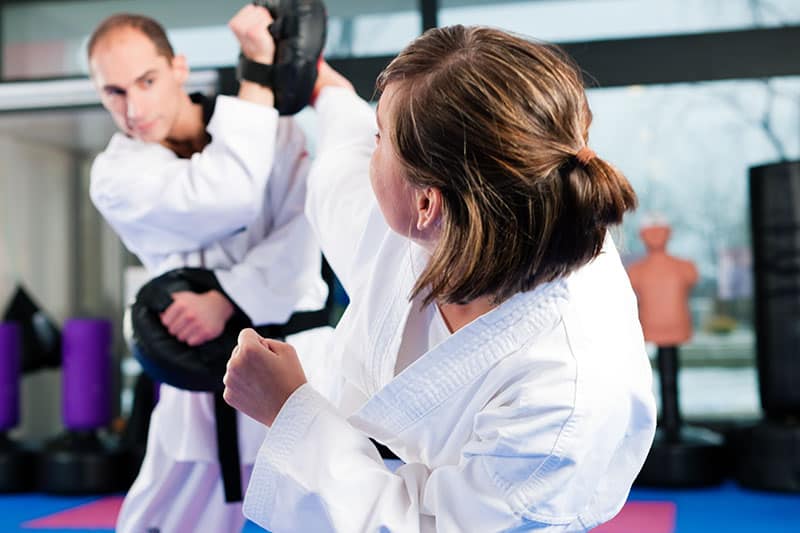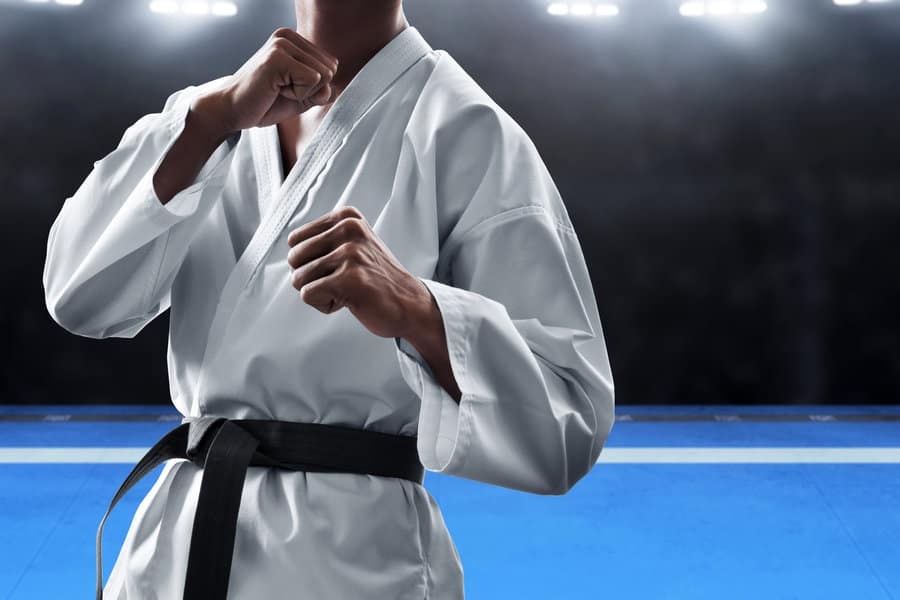
Anyone with some martial arts training—or just a bit of common sense—knows that avoiding a street fight is always the best move. But sometimes, circumstances make you wonder what to do when things get real. In those unavoidable moments, winning the fight is all that matters.
While lawyers and idealists might debate the ethics of physical conflict, what really counts is being prepared. Taekwondo gives you that edge by building your physical strength, sharpening your mind, and teaching practical moves that work outside the gym.
Even though those flashy moves like a jumping spinning kick might look cool in a demo, they’re not always practical in a chaotic street brawl. The true power of Taekwondo is in its well-rounded training—improving your body, mind, and technique. Let’s break it down.
Physical Conditioning

Before diving into specific exercises, it’s important to understand that a strong physical foundation is key in any martial art. Taekwondo training is all about boosting your flexibility, strength, and endurance—essentials when you’re faced with a real fight. Check out these key elements of physical conditioning that you build through Taekwondo:
Overall Strength:
The conditioning exercises in Taekwondo strengthen your muscles and tendons, reducing the risk of injury when you’re throwing powerful kicks or blocking punches. Having a robust body means you can handle the physical stress of an altercation more effectively. It’s all about making sure your body can both dish out and take a hit.
Flexibility and Speed:
Rigorous stretching routines help increase your joint mobility, making it easier to land high and fast kicks. This extra flexibility means you can react quicker when things go south, and it helps prevent injuries during intense action. Plus, with improved speed, you can outmaneuver opponents who might not be as agile.
Muscle Memory:
Repeating basic kicks and punches over and over builds that automatic reflex response you need in a real fight. It means your body will act before your brain has time to overthink every move. Over time, these movements become second nature, making your actions smooth and reliable under pressure.
Endurance and Stamina:
Continuous training not only builds your strength but also seriously boosts your cardiovascular health. This means you won’t tire out quickly if a fight drags on longer than you expected. You’ll find yourself able to keep up the pace, even when adrenaline starts to wane.
Mental Fortitude

Before you throw a punch, you’ve got to get your mind in the right place. Taekwondo isn’t just about training your body—it’s about toughening up your mental game too. Here’s how building mental fortitude can really set you apart in a street fight:
- Overcoming Fear:
Regular sparring sessions and controlled combat drills help you push past that initial surge of fear. You learn to trust your training and react without freezing up, even when the stakes are high. Over time, you become more confident that you can handle whatever comes your way. - Focus and Clarity:
Mental conditioning exercises help sharpen your concentration, making sure you can keep your cool in the middle of chaos. With better focus, you’re more likely to notice the little details that could give you a tactical advantage. This clarity of thought makes your actions more deliberate and effective. - Stress Management:
Facing simulated combat situations teaches you how to manage your adrenaline and stay calm under pressure. This means you’re less likely to get overwhelmed when real danger strikes. It’s like training your brain to hit the reset button even when things get intense. - Pain Tolerance:
The intense physical routines help increase your threshold for pain, so a hit or scrape won’t send you into shock. You learn to push through discomfort, knowing that a little pain won’t stop you from defending yourself. This resilience helps you stay in the fight even when things get rough.
Technical Skills for a Street Fight

Taekwondo is famous for its eye-catching kicks, but there’s so much more behind the scenes. The art teaches you a whole range of practical moves that can be a lifesaver when you really need them. Let’s look at the essential defensive and offensive techniques that translate into real-world self-defense.
Defensive Techniques
Effective self-defense is about protecting yourself and finding the chance to counter-attack. Taekwondo trains you in a bunch of defensive moves that help you stay safe and keep your balance when things get hectic. Here are some key defensive techniques:
- Fighting Stance:
A solid fighting stance is your foundation—it helps shield your vital areas and sets you up for quick moves. By practicing this stance repeatedly, you develop the muscle memory to react instinctively. It’s like having a safety net that keeps you balanced and ready, no matter what the opponent throws at you. - Side-Stepping:
Mastering side-stepping lets you dodge incoming strikes without losing your footing. It’s a quick way to create space between you and your attacker, giving you a chance to launch a counter-attack. This move is all about agility and timing, and with practice, it becomes a natural reflex. - Dynamic Footwork:
Learning to move with light and nimble footwork—like skipping and lateral shifts—helps you stay unpredictable. It means you can reposition yourself quickly, which is crucial when facing multiple attackers or someone armed with a weapon. This dynamic movement keeps you one step ahead of any threat. - Palm Blocks:
Palm blocks are designed to deflect strikes while keeping your balance intact, reducing the risk of injury. They allow you to neutralize an attack without relying solely on brute force. With enough practice, your blocks become both a defensive shield and an opening for a counter move. - Stance Recovery:
After launching an attack, the ability to quickly reset into a defensive stance is vital. This recovery time is what keeps you from leaving yourself vulnerable immediately after striking. It’s all about maintaining your composure and ensuring you’re always ready for the next move.
Offensive Techniques
Taking the initiative in a fight can sometimes be your best defense. Taekwondo gives you a range of offensive moves that help you seize control of the situation quickly. Here are some of the top offensive techniques you can rely on:
- The Axe Kick:
The axe kick is a powerful move where you lift your leg high and bring it down with force, just like swinging an axe. It’s particularly effective at catching an opponent off guard and knocking them off balance. When executed properly, this move can create a decisive opening, making it a favorite among seasoned practitioners. - Side/Back/Turning Side Kick:
This versatile kick allows you to deliver full-leg power while keeping your recovery quick. It’s great for defending against attacks from behind or multiple opponents, as it covers a wide area. With practice, you can execute it swiftly, ensuring that you maintain both offense and defense simultaneously. - Forty-Five (Roundhouse) Kick:
The roundhouse kick is a staple in Taekwondo that combines speed with simplicity. It’s perfect for targeting an opponent’s lower body, leaving their head more protected. This move is easy to learn and, with consistent practice, becomes a fast and reliable way to keep your opponent guessing.

Additional Things to Keep in Mind
Before you decide whether Taekwondo is your go-to self-defense tool, it’s important to consider a few practical points. These insights will help you see the full picture and make a smart choice about incorporating Taekwondo into your personal safety plan. Here are some key things to keep in mind:
- Realistic Expectations:
While Taekwondo can seriously improve your physical and mental readiness, it doesn’t guarantee that you’ll win every fight. It’s important to understand that every situation is different, and no training can cover every possible scenario. Keeping your expectations grounded will help you use your skills wisely. - Training Level Matters:
Your level of experience plays a huge role in how effective your techniques will be. Beginners might not be ready to pull off all the advanced moves right away, while seasoned practitioners will have honed their reactions over time. This means that consistent practice and gradual improvement are key to building real-world competence. - Supplementary Skills:
Sometimes, having extra training in areas like situational awareness or even basic legal knowledge about self-defense can make a big difference. Taekwondo is a strong foundation, but supplementing it with additional skills can help cover all your bases. Think of it as building a complete self-defense strategy, not just relying on one discipline. - Expert Opinions:
Many martial artists and self-defense experts suggest that a balanced approach—mixing both defensive and offensive techniques—is the best way to stay safe. Listening to those who’ve been in the trenches can give you insights that go beyond what any book or class can teach. Their advice might just tip the scales in favor of developing a more rounded skill set. - Safety First:
Ultimately, the goal of learning Taekwondo is to protect yourself and avoid harm. It’s crucial to remember that sometimes the smartest move is to walk away from a dangerous situation. Safety always comes first, and knowing when to disengage is just as important as knowing how to fight.
Final Thoughts
Taekwondo offers a ton of benefits when it comes to physical conditioning, mental resilience, and technical self-defense skills. While it might not guarantee you’ll win every street fight, the training gives you the tools to protect yourself and make quick, smart decisions under pressure.
Ultimately, the best move is always to avoid dangerous situations whenever possible, but if you ever find yourself with no other choice, the strength, speed, and mental preparedness you build through Taekwondo can be your saving grace.
Remember, it’s all about staying safe, being aware, and keeping up with your training. With time and practice, you’ll feel more confident knowing you’ve got a solid defense system ready for when you need it most.

